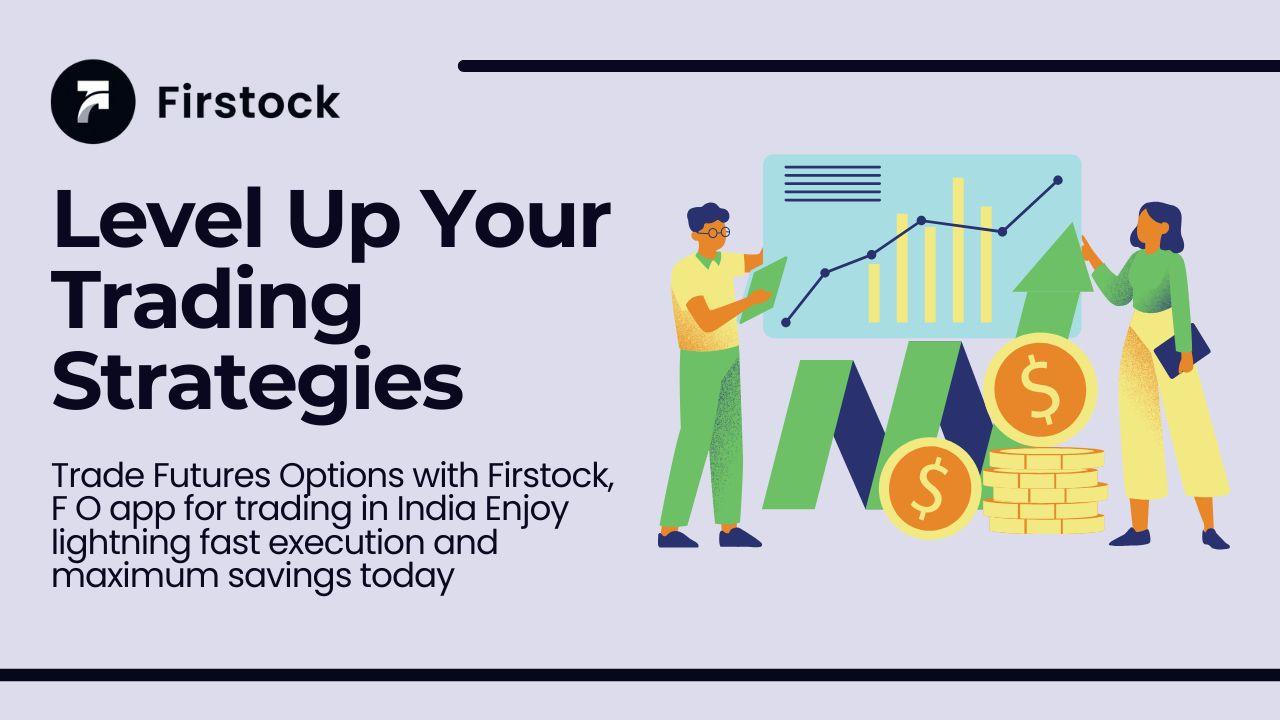Futures & Options Trading for Beginners – India Guide

Futures and Options Trading for Beginners
So you’ve heard about “futures and options” and maybe thought, “Could I get into this?” Good news – you can. This is a friendly, step-by-step journey into the world of derivatives: the part of the market where you use contracts rather than simply buying shares. If you’re wondering how do I start with an option trading app or the app for options trading India, this article will cover that too—with the beginner in mind.
Think of trading in futures and options like booking a concert ticket in advance (option) or promising to buy the car next month at today’s price (future). The idea is to plan ahead, but because you’re dealing with something that will happen in the future, there are risks. To make sense of it all we’ll dig in together.
Learn about futures and options trading for beginners, how to use an option trading app, app for options trading India, app for trading in India, trading apps for beginners and discount brokers in India.
What are Futures and Options?
Let’s break this down in simple terms.
-
A future is a contract that obligates you (or someone) to buy or sell an asset at a predetermined price on a specific date in the future.
-
An option gives you the right but not the obligation to buy or sell the asset at a set price by (or on) a specific date.
Imagine you want to buy a popular phone six months later at the price it costs today. With a future, you commit to buy that phone six months later at today’s price whether you like it or not. With an option, you put down a small booking fee now (premium), and you reserve the right to buy the phone in six months at today’s price — you can decide later whether to buy or not. That small booking fee is lost if you don’t go ahead, but you avoid the obligation.
In the stock market (India included), these instruments are used for stocks, indices (like the Nifty 50), commodities, etc.
Key Differences: Futures vs Options
Since both are derivatives (i.e., contracts whose value depends on something else), it’s helpful to compare:
-
Obligation vs right: Future = obligation. Option = right (not obligation).
-
Premium/Margin: With options you pay a premium. With futures you put up a margin.
-
Risk & reward profile: Options can limit your loss to the premium paid (if you are a buyer), but with futures losses (and gains) can be much larger because of leverage.
-
Expiry & time decay: Options have value erosion over time (called time-decay). Futures don’t have the same mechanism.
-
Use case: Futures often used for hedging large exposure, or speculation; options used for more flexible strategies (limited loss, multiple combinations).
Why Beginners Should Care About F&O Trading
You might ask: If I’m just starting out, why even bother with futures and options instead of just buying shares? Good question.
Here are some reasons:
-
Leverage: F&O allow you to control a larger value of asset with smaller money upfront (because of margin). That can mean bigger returns—or bigger losses.
-
Hedging: If you own stocks and worry about a drop, you can use options to protect your portfolio (kind of like insurance).
-
Speculation & flexibility: If you believe a stock or index will move a lot, you can use options/futures to try to profit from that without necessarily owning the stock.
-
Learning advanced investing tools: Even as a beginner, being aware of F&O helps you understand broader market mechanics and risk.
However — and this is key — while there’s potential, there’s also risk. Many beginners dive in without fully understanding and face losses. That’s why we will go slow and keep things simple.
Basic Terms You Must Know (Strike, Premium, Margin…)
Let’s simplify some of the jargon you’ll see when you start with an option trading app or trading in F&O.
-
Underlying Asset: The asset on which a derivative is based (stock, index, commodity).
-
Strike Price (or Exercise Price): For an option, this is the price at which you can buy or sell the underlying if you choose to exercise it.
-
Expiry Date: The date on which a future/option contract ends. After that it will settle or lapse.
-
Premium: For an option, the cost you pay upfront for the right; you lose this if you don’t use the option.
-
Margin: For futures (and also for sellers of options) you need to deposit some money (margin) which covers potential losses.
-
Lot Size: Minimum quantity you must trade in (for example futures contracts often have a predefined lot size).
-
In-The-Money / Out-Of-The-Money: Terms used in options to describe whether exercising is profitable or not.
-
Leverage: Using small money to control a bigger asset; risk and reward both amplify.
Using a concert ticket analogy: Suppose you pay ₹100 today for an option to buy a ticket at ₹500 next month (your premium is ₹100). If the ticket prices shoot to ₹700, you can use your option and buy at ₹500 (gain ₹200). If the ticket prices remain at ₹500 or fall to ₹450 you may let the option lapse and lose your ₹100. That’s simple. Futures would be like promising today: “I will buy the ticket for ₹500 next month, no matter what.” Whether the ticket goes to ₹700 or drops to ₹400, you’re compelled to buy at ₹500.
How to Get Started in India – Step by Step
Let’s walk through how you (in India) would begin trading futures and options with an app for options trading India in mind.
-
Educate Yourself First
Don’t rush. Many guides say: first understand what the contracts are, how they settle, the risks. -
Select a Broker that Supports Derivatives
Choose a broker who offers F&O trading (futures & options) and has the app you’ll use. -
Complete KYC & Open a Trading + Demat Account
You’ll need to link your bank, finish KYC (identity verification), and then enable your account for derivatives. -
Choose the Right App for Options Trading in India (and for trading in India in general)
Many discount brokers provide apps optimized for derivatives (we’ll cover how in next section). -
Start with a Demo or Practice Account
Some brokers/apps provide “paper trading” or simulated trading with virtual money so you can see how trades work without real risk. -
Pick Your First Trade – Keep It Simple
Don’t jump into complex strategies. Maybe pick a single option or future trade you understand. -
Keep Risk Small – Use Stop Loss / Limited Position Size
Ensure you only risk what you can afford to lose. It’s a key point especially for beginners. -
Learn & Track Your Trades, Learn from Mistakes
Note what went right/wrong. F&O trading is not just about luck—it’s about preparation and discipline.
By following these steps, you’ll move into the world of futures and options with your eyes open and a plan.
Choosing an Option Trading App & App for Trading in India
When you’re looking for an option trading app (or more broadly an app for trading in India), especially for F&O, here are the features you should check. Think of choosing the app like picking the right car for a long trip—you want reliability, safety, and comfort.
Key features to look for:
-
Derivatives (F&O) Enabled: Not all apps support futures & options; some only allow equity. Make sure your broker/app supports the segment.
-
User-Friendly Interface: For beginners, confusing screens lead to mistakes.
-
Good Learning / Help Resources: Tutorials, demo trades, help centre.
-
Low Transaction Fees & Transparent Pricing: You’re more likely to stay in trading if costs are clear.
-
Reliable in Terms of Stability: Leverage and margin mean that lag or downtime can be costly.
-
Charting Tools & Analytics: To track markets, visualize trends.
-
Instant Notifications: For key alerts – margin calls, price moves, expiry.
-
Secure & Regulated: App must abide by regulations (in India it’s under Securities and Exchange Board of India (SEBI)).
By choosing smart, you’ll make your journey smoother. Later you’ll combine this with selecting a “discount broker in India” to get good value.
Trading Apps for Beginners – What to Look For
As a beginner you’re likely wary of complexity and want simple features. Here’s a checklist tailored for trading apps for beginners in F&O:
-
Demo/Virtual Mode: Practice without risking real money.
-
Minimal Steps to Place a Trade: Simple interface, less clutter.
-
Clear Display of Risk/Reward: Show potential loss, margin required.
-
Built-in Education Tools: Glossary, video guides.
-
Stop-Loss & Order Types Easy to Use: Beginner friendly order types like stop-loss, limit, etc.
-
Alerts & Reminders: Especially around expiry or position size.
-
Support for Small Budgets: Being able to start small helps.
-
Broker Support/Chat: Being able to ask questions when stuck is helpful.
Starting your journey with the right app can make a big difference in your confidence and learning curve.
Discount Brokers in India – How They Fit In
What are discount brokers in India? Simply put: brokers that charge lower fees and commissions compared to traditional full-service brokers. For someone doing F&O trading, lower costs can help because many trades will happen.
Key things about discount brokers:
-
They typically offer online apps + platforms tailored for trading.
-
They may charge lower brokerage per trade, or zero brokerage on certain segments.
-
Because F&O trading involves frequent trades (for many), a discount broker helps reduce cost drag.
-
However, low cost doesn’t mean low quality—check for reliability, support, and regulatory compliance.
So when you pick your app for trading in India and support F&O, check “who is the broker behind it?” and “how much will I pay per trade?” Choosing a good discount broker gives you more room to experiment as a beginner.
Risk Management – Why It’s Especially Important in F&O
Here’s where the analogy of driving comes back: you wouldn’t speed through a rainy road without a seatbelt—and you shouldn’t dive into F&O without risk measures. Because of leverage and contract complexity, risk can escalate quickly.
Important risk management tips:
-
Never risk more than you can afford to lose: Many beginner mistakes come from “going all in” early.
-
Use stop-loss orders: Set a point at which you exit the trade to limit loss.
-
Start small: Especially with your first few trades, keep the size small.
-
Don’t chase losses: Trying to “recover” quickly with bigger trades is a red flag.
-
Avoid too many open positions: It becomes harder to track and can lead to blunders.
-
Understand expiry and contract specs: Knowing when your contract ends and what happens then is crucial.
-
Beware of emotional trading: Greed and fear can drive bad decisions. Keep your plan ahead.
Being careful doesn’t mean you’re missing out—it means you’re staying in the game longer, learning more, and ready for growth.
Common Mistakes Beginners Make & How to Avoid Them
Let’s call out some common traps and how you can dodge them:
-
Mistake: Jumping into complex strategies immediately.
Solution: Start with basic contracts/trades you understand. -
Mistake: Ignoring the contract specifications (lot size, margin, expiry).
Solution: Read the contract properly, use the demo mode first. -
Mistake: Using too much leverage or too big position size.
Solution: Use a conservative size, set stop-loss. -
Mistake: Trading without a plan (entering on impulse).
Solution: Have a simple trading plan in writing: why you’re entering, potential outcome, stop-loss. -
Mistake: Not tracking trades or learning from mistakes.
Solution: Keep a journal of every trade: why you did it, result, what you learned. -
Mistake: Ignoring cost/fees. High brokerage, bad app = cost eats profit.
Solution: Choose a good discount broker + app. -
Mistake: Letting emotions control the trade.
Solution: Pre-decide exit points, avoid “just one more trade”.
Avoiding these mistakes early will save you from big headaches.
Simple Strategies You Can Try (with Caution)
Let’s talk about very simple strategies that beginners might explore. Don’t treat these as recommendations—but as examples you can understand.
-
Buy a Call Option: If you think a stock/index will go up, you buy a call (right to buy at strike price). You pay a premium. If price goes up significantly before expiry, you profit. If not, you lose premium.
-
Buy a Put Option: If you think a stock/index will go down, you buy a put (right to sell at strike price).
-
Covered Call: You own the stock and sell a call on it (this is more intermediate).
-
Hedging with Options: Suppose you have long stocks, you buy puts on the same to protect downside.
Again: keep it simple. Understand how much you’re risking, what you’re gaining. If you use a good trading app for beginners and keep cost low via a discount broker in India, you can practice these with confidence.
When Not to Do Futures & Options Trading
Trading F&O isn’t for everyone—and particularly as a beginner you should pause and think if one of these applies:
-
You don’t have time to monitor markets. Derivatives often require more active attention.
-
You don’t understand the contract mechanics (lot size, margin, expiry).
-
You have funds you cannot afford to lose. Derivatives involve risk.
-
You’re reacting emotionally (fear, greed) rather than sticking to a plan.
-
You’re not willing to learn. F&O is not “set and forget” like some stocks—they demand learning.
In these cases, it might be better to start with simpler investing (like equities or mutual funds) and then move to F&O once you’re comfortable.
Conclusion
Let’s wrap up. The world of futures and options trading offers an exciting realm for someone who wants to go beyond just buying stocks. Using an option trading app, exploring an app for options trading India, selecting the right trading apps for beginners, and linking with discount brokers in India—these are all practical steps you can take as a beginner.
But—and this is key—the tool is only as good as how you use it. With great potential comes risk. By educating yourself, starting small, selecting the right app & broker, and managing risk carefully, you increase your chances of going from “beginner” to “confident trader”. Think of this as learning to swim: you’ll start in shallow water, get comfortable, then move deeper when you’re ready.
Now that you have this blueprint, consider opening a demo account, choosing your first trade carefully, and tracking what you learn along the way. Welcome to the journey of futures and options trading.
FAQs
1. What is the minimum money needed to start futures and options trading in India?
There isn’t a fixed amount for all brokers—it depends on the margin required for the contract, the lot size, and the broker’s rules. As a beginner, you should start with an amount you can afford to lose and always check the margin requirement in your trading app.
2. Can I use any trading app in India for options trading or futures trading?
No — not all apps support derivatives like futures and options. You need to choose an app that explicitly allows F&O trading and is linked with a broker who supports it. Check “derivatives enabled” in the app features.
3. Is buying options safer than buying futures?
In many cases yes, as a buyer of an option you are not obligated to trade; your loss is limited to the premium you paid. In futures you often have full obligation and higher potential loss because of margin/leverage. But “safer” doesn’t mean risk-free—nothing is.
4. How do discount brokers in India help beginners in F&O trading?
Discount brokers offer lower fees, simpler apps, and user friendly platforms. For beginners making many small trades, lower brokerage costs mean less drag on your returns. But you still need quality platform and support.
5. What is the best first strategy for a beginner in futures and options trading?
Start with a simple buying-one-call (or buying one put) strategy you understand. Choose a modest size, use a well-known trading app, pick a stock/ index you follow, set your stop-loss, know your risk upfront. Practise first on a demo mode if possible.






